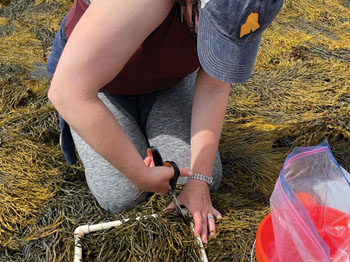For the past nineteen years the MMA graduate has been at the forefront of global ocean research
When Eric King ’90 explained the workings of the 363-foot ocean research vessel Falkor (too) during a Zoom call this past January, his hands came alive. He made circular motions to accompany a description of the amazing propulsion system run by Voith Schneider Propellers, whose vertical blades spin in the same direction. In describing the hangar that holds the ship’s remotely operated vehicles, or ROVs, his hands and arms attempted to articulate a large protective space in the belly of the vessel.
King became even more animated when talking about the the ship’s 2023 expeditions. The crew complement is 28 but the ship has 70 additional berths for scientists, ROV pilots, artists, media personnel, and students. In June they will be on an “octopus odyssey” to investigate the biodiversity of unprotected seamounts off Costa Rica. Later in the year they will be exploring hydrothermal vents and vertical reefs in the Galápagos. The team will also be testing the capabilities of a new technology that provides high-resolution 3-D mapping of the seafloor: Interferometric Synthetic Aperture Sonar.
King oversees the operation of the ship, where it is going, and everything related to its operations. He also administers the science work and organizes the various expeditions while working within an international research vessel community “to find synergies between us and other institutions” so that they all can work on a much larger scale of ocean research and exploration.
How did King end up Senior Director of Operations for a state-of-the-art ocean research vessel? His remarkable journey, like many others, began at MMA.
-
 Drones Assist Rockweed ResearchMMA researchers explore sustainable harvesting options to protect an important resource
Drones Assist Rockweed ResearchMMA researchers explore sustainable harvesting options to protect an important resource
...Read More -
 MMA Grad at the HelmJohn McDonald ’93 and innovation at the American Bureau of Shipping.
MMA Grad at the HelmJohn McDonald ’93 and innovation at the American Bureau of Shipping.
...Read More
